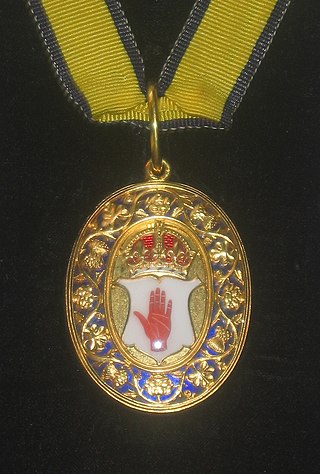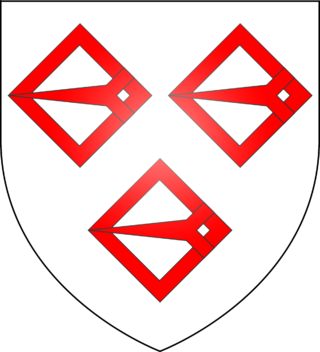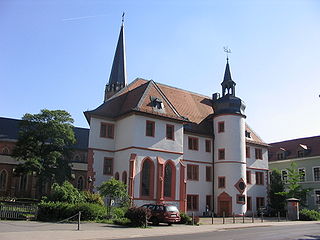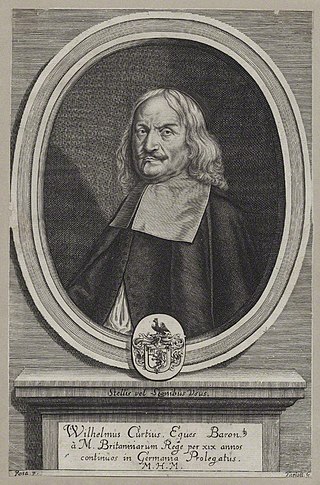
A baronet or the female equivalent, a baronetess, is the holder of a baronetcy, a hereditary title awarded by the British Crown. The title of baronet is mentioned as early as the 14th century; however, in its current usage it was created by James I of England in 1611 as a means of raising funds for the crown.
There have been three baronetcies created for members of the Anstruther family, two in the Baronetage of Nova Scotia and one in the Baronetage of Great Britain. Two of the creations are extant while one is extinct.

There have been four baronetcies created for members of the Acland family, which originated in the 12th century at the estate of Acland in the parish of Landkey, North Devon, two in the Baronetage of England and two in the Baronetage of the United Kingdom.
There have been a number of creations of baronets with the surname Smith.
The Ashburnham Baronetcy, of Broomham in the County of Sussex, is a title in the Baronetage of England. It was created on 15 May 1661 for Denny Ashburnham, Member of Parliament for Hastings. He was the grandson of Adam Ashburnham, Member of Parliament for Winchelsea in 1592, who was the son of Laurence Ashburnham, and a descendant of Richard Ashburnham of Broomham, second son of Thomas Ashburnham, whose eldest son John was the ancestor of the Earls of Ashburnham. He was succeeded by his elder son, William, the second Baronet. He represented Hastings and Seaford in the House of Commons. He died childless in 1755 and was succeeded by his younger brother, Charles, the third Baronet. His son, William, the fourth Baronet, was Bishop of Chichester. On his death the title passed to his son, the fifth Baronet. He sat as Member of Parliament for Hastings.

The Jerningham Baronetcy, of Cossey in the County of Norfolk, was a title in the Baronetage of England. It was created on 16 August 1621 for Henry Jerningham. The 5th Baronet married Mary Plowden, only daughter of Mary Plowden, sister of John Paul Stafford-Howard, 4th Earl of Stafford and de jure 5th Baron Stafford. He was succeeded by his son, the sixth Baron. In 1807 the claim to the barony of Stafford, which had been under attainder since 1680, passed to him through his mother. He died in 1809 when the baronetcy and the claim to the barony passed to his son, the seventh Baronet. He petitioned the House of Lords for a reversal of the attainder of the barony of Stafford and for a writ of summons to Parliament. In 1824 the attainder was reversed and the following year he was summoned to the House of Lords as the eighth Baron Stafford.
There have been five Baronetcies created for people with the surname Forbes, four in the Baronetage of Nova Scotia and one in the Baronetage of the United Kingdom. The first holder of the Burn Baronetcy of Jessfield, created in the Baronetage of the United Kingdom in 1923, assumed the surname of Forbes-Leith of Fyvie in 1925.
There have been nine baronetcies created for persons with the surname Lloyd, three in the Baronetage of England, three in the Baronetage of Great Britain and three in the Baronetage of the United Kingdom. Two of the creations are extant as of 2010.
There have been nine baronetcies created for persons with the surname Moore, two in the Baronetage of England, one in the Baronetage of Ireland, two in the Baronetage of Great Britain and four in the Baronetage of the United Kingdom. As of 2014 two creations are extant and one is considered dormant.
There have been four baronetcies created for persons with the surname FitzGerald, one in the Baronetage of Ireland and three in the Baronetage of the United Kingdom.
There have been two baronetcies created for persons with the surname Piers, one in the Baronetage of Nova Scotia and one in the Baronetage of Ireland. One creation is extant as of 2008 while the other is dormant.
There have been three baronetcies created for persons with the surname Dryden, one in the Baronetage of England and two in the Baronetage of Great Britain. Two of the creations are extant and are joined under a single holder since 1874.
There have been seven baronetcies created for persons with the surname Sinclair, six in the Baronetage of Nova Scotia and one in the Baronetage of Great Britain. Four of the creations are extant as of 2008.

The Hoghton or Houghton, later Bold-Hoghton, later de Hoghton Baronetcy, of Hoghton Tower in the County of Lancashire, is a title in the Baronetage of England. It was created on 22 May 1611 for Richard Hoghton, Member of Parliament for Lancashire. The Hoghton family had been landowners in Lancashire since the reign of King Stephen and had been Knights of the Shire for Lancashire since the 14th century. The second Baronet represented Clitheroe and Lancashire in the House of Commons and was a Royalist leader during the Civil War. The third and fourth Baronets both sat as Members of Parliament for Lancashire. The fifth Baronet was Member of Parliament for Preston and East Looe while the sixth and seventh Baronets represented Preston. The eighth Baronet assumed the additional surname of Bold. In 1892 the ninth Baronet resumed, by Royal licence, the ancient family surname of de Hoghton.

There have been two baronetcies created for persons with the surname Goring, both in the Baronetage of England. The second creation came into the family through a special remainder in the patent creating the baronetcy. Only the latter creation is extant as of 2008.

The Mostyn baronets are two lines of Welsh baronets holding baronetcies created in 1660 and 1670, both in the Baronetage of England. One creation is extant as of 2015. The two lines are related and both claim descent from Edwin of Tegeingl, an 11th-century lord of Tegeingl, a territory which approximates modern Flintshire.

There have been six baronetcies created for members of the Corbet family, four in the Baronetage of England, one in the Baronetage of Great Britain and one in the Baronetage of the United Kingdom. All creations are extinct. The recipients were descendants of the ancient Norman family of Corbet which held substantial estates in Shropshire including Wattlesborough, Caus Castle, Moreton Corbet Castle and Acton Reynald Hall.
There have been five baronetcies created for persons with the surname Wentworth, four in the Baronetage of England and one in the Baronetage of Great Britain. All creations are extinct.

The Casimirianum in Neustadt an der Haardt was a Reformed academy, which was founded in 1578 by Count Palatine Johann Casimir and named after him. The Casimirianum endured only five years. Today the name is used for the restored historical building that the Casmirianum occupied.

John William Curtius (1598–1678), 1st Curtius Baronet of Sweden, FRS, was a diplomat representing the House of Stuart during the Thirty Years' War and the exile of Charles II. In later life, he served as Resident Ambassador of the English Crown in the Holy Roman Empire, and was head magistrate for two districts of the Electoral Palatinate.











